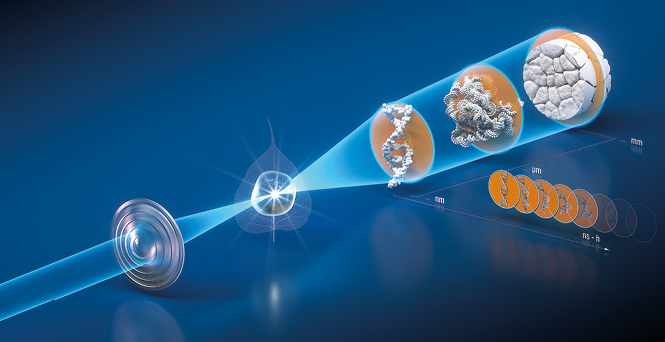URL: https://v1.desy.de/site_www-desy/content/petra4/about_petra_iv/3d_x_ray_microscope/index_eng.html
Breadcrumb Navigation
Research and innovation tool

3D X-ray microscope
Research and innovation tool
PETRA IV - the unique 3D X-ray microscope is to be built on the DESY campus in Hamburg by 2027: PETRA stands for Positron-Electron Tandem Ring Facility. The storage ring accelerates electrons to almost the speed of light. This produces ultra-bright X-ray light that is directed to experimental stations. The existing 2,300-meter ring from the previous PETRA III facility will be modernized, and its instruments and infrastructure partially recycled. Today and in the future, international research groups will use the particularly brilliant, intense X-ray light for their experiments - from medical to materials research.
»The upgrade to PETRA IV is a crucial step for the European Research Area. DESY's fourth-generation light source will promote the faster development of much-needed future technologies for the benefit of European society and science.«
Advance in the Nanocosm
With today's X-ray sources, however, important regions of the nanocosm remain in the dark. The problem is that their source points are too large, and the light they emit diverges too much. As a result, the radiation cannot be focused well enough to scan small structures with pinpoint accuracy, and the X-ray diffraction images are too blurred to reveal the finest details. While the PETRA III beam is small only in the vertical direction and extended horizontally, PETRA IV produces beams that are only a few micrometers small both horizontally and vertically and can thus be focused even further down to the nanometre level. This enables imaging techniques with 100 times higher precision and 100 times faster experiments than before. PETRA IV thus makes any form of matter visible in 3D on scales down to just a tenth of a nanometre.
The nanoscale holds the key to understanding many processes in nature, such as protein and ion channels in cells. But also tiny wires and switches in future computer chips will become visible in 3D for the first time. PETRA IV opens up a new and three-dimensional view of the smallest structures and processes, which is crucial for the investigation of energy storage systems, fuel cells, catalysts and biological cells.
The combination of high resolution, luminosity and properties such as coherence makes PETRA IV the ultimate 3D X-ray microscope and previous methods nano-experimentation techniques. This leads to new applications in areas such as energy, environmental and health research, transportation and new technologies.


